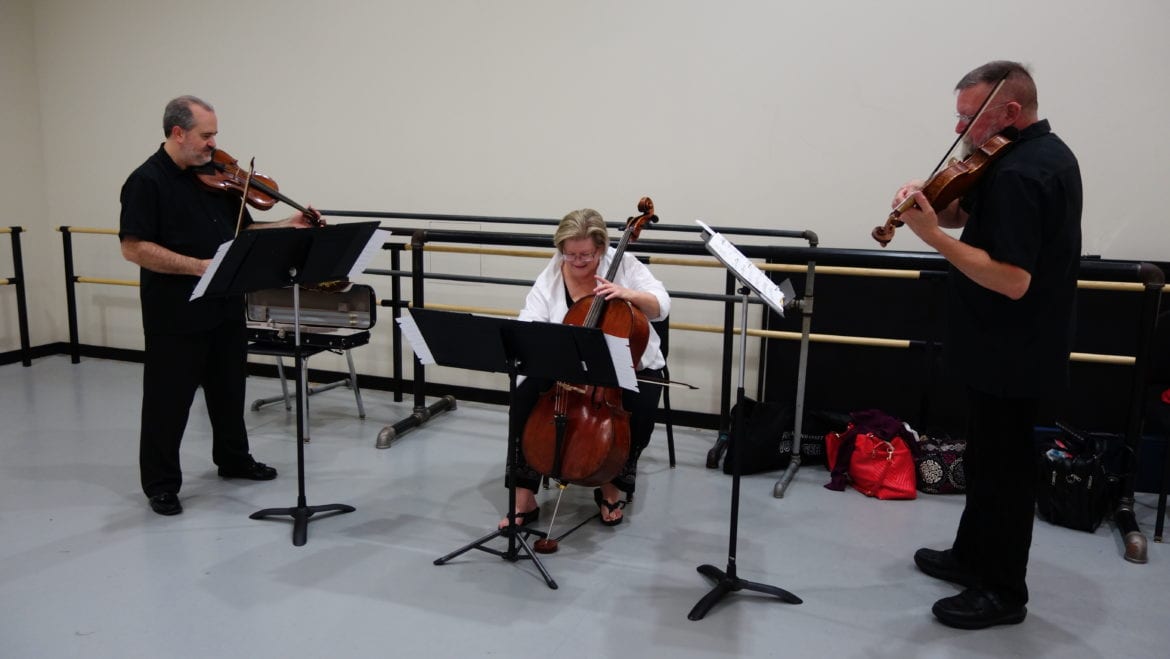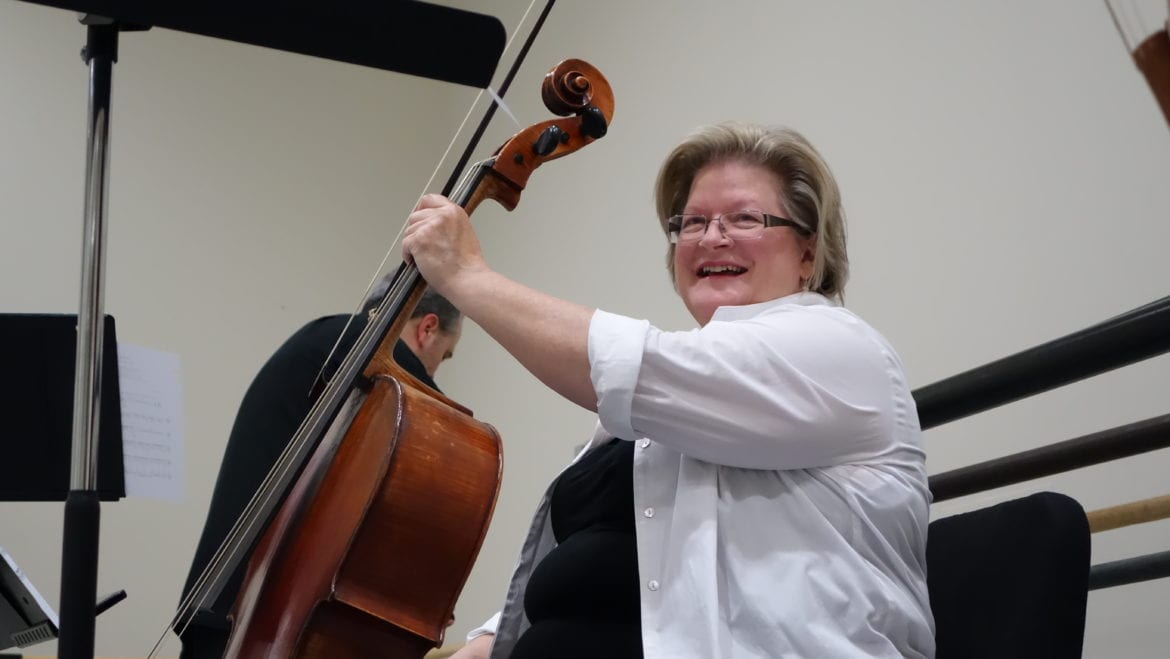Sympathetic Vibrations | Going Back in Mind Concert Series Connects Arts Across Centuries
 The KC Baroque Consortium uses instruments constructed using methods from the music's time period in order to perform authentic recreations of the era's music. From left, Monty Carter, Trilla Ray-Carter, and William Bauer. (Dan Calderon | Flatland)
The KC Baroque Consortium uses instruments constructed using methods from the music's time period in order to perform authentic recreations of the era's music. From left, Monty Carter, Trilla Ray-Carter, and William Bauer. (Dan Calderon | Flatland)
Published August 10th, 2017 at 6:00 AM
When you think of chamber music composed hundreds of years ago, “cutting edge” is probably not the first phrase that comes to mind.
Trilla Ray-Carter is hoping to change that.
Ray-Carter is the executive and artistic director of the Kansas City Baroque Consortium, a group of local musicians dedicated to performing and educating the public about music that was part of an artistic style from the 1600 and mid-1700s. The style influenced every art form of its time.
Ray-Carter founded the group in 2009 and established a non-profit last year with the aim of providing larger-scale events. The fruit of those efforts has been the consortium’s 2017 Summer Series: Between Silence & Light – a trio of performances exploring how the styles and ideas of the past inform the arts of today. The third and final concert of the series will take place tomorrow at St. Paul’s Episcopal Church.
The title is inspired by architect John Lobell’s book, “Between Silence and Light: Spirit in the Architecture of Louis I. Kahn,” written about the 20th century architect who combined modernism with ancient elements.
Ray-Carter was most intrigued by the “between” that bridges silence, which is immeasurable, and light, which is measurable. To her, the connectivity is the interplay between art forms.
The first concert of the summer series, for example, explored music and architecture, featuring a discussion with Lobell. The second concert examined music, word and art through the career of Makoto Fujimura, an American-born writer. This week’s performance will examine music and dance in a collaboration with local choreographer Jennifer Owen of the Owen/Cox Dance Group.
The series has meticulously woven together these contemporary arts with a backdrop of Baroque music, including three pieces commissioned from the head of the Music Department at William Jewell College, Ian David Coleman.
Coleman joined the project after reading an excerpt from Lobell’s book. His experience composing a piece for each concert and collaborating across disciplines speaks to the spirit of Kahn’s philosophy.
The process, Coleman said, confirmed his belief that the creative process is similar in many different art forms, including dance, painting, and architecture — extending even to the way a listener interprets a piece of music.
These works from more contemporary artists, writers, and architects are clearly a necessary element of the series, but Ray-Carter’s consortium plays an important role in tethering these practices to the past. And while most musicians could be forgiven for simply performing the music composed by the Baroque era’s known figures alone, Ray-Carter has taken it a step further to ensure authenticity.
Consortium musicians play instruments constructed the same way they were made during the Baroque period. In the same vein, instead of steel or polymer, the musicians use “gut strings” made from the walls of animal intestines. Touches like those produce music the way Handel or Bach would have heard it.
“What we’ve found is that when we put the horse hair of the bow on the sheep gut, there is, if I can say it, a magical sound that you can’t reproduce on a modern instrument,” Ray-Carter said. “There is a whole world of musical sound and shape that is revealed only when you go onto these ancient instruments.”
Ray-Carter and Coleman said the response to the series has been overwhelmingly positive, a result both attributed to the originality of the concept. Ray-Carter hopes to continue unpacking these ideas by making the series an annual event. And why shouldn’t she? The performances in this series are not simply a collection of concerts but an invitation to audiences to explore ideas and reach across disciplines to find common ground, common understanding, and, perhaps, common origins in thought.
— Dan Calderon is a Kansas City native, an attorney, and contributor to Flatland. You can contact him by emailing pdancalderon@gmail.com, or on Twitter @dansascity.




